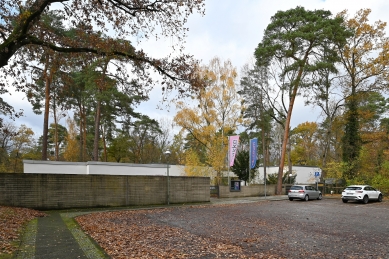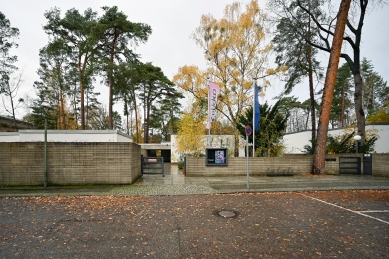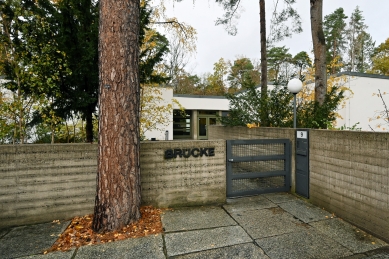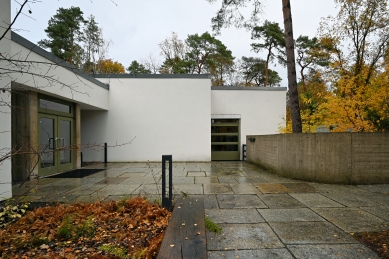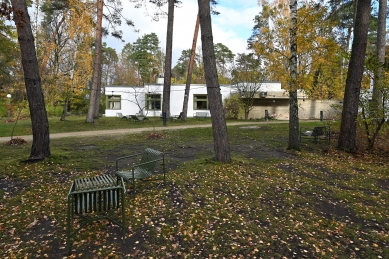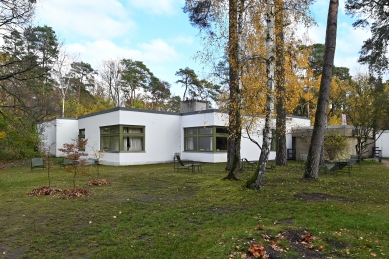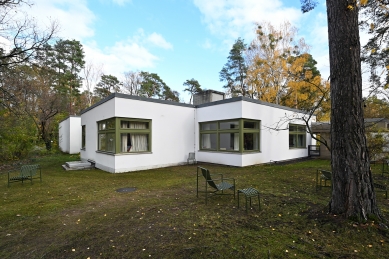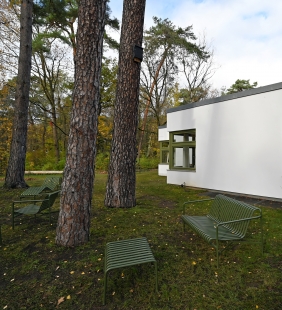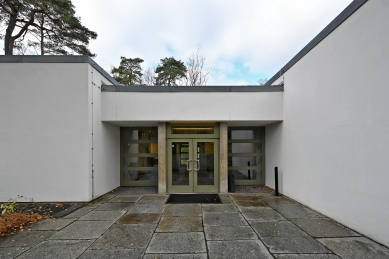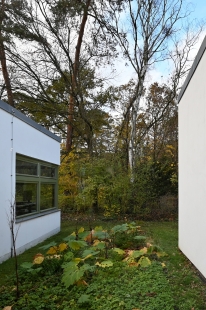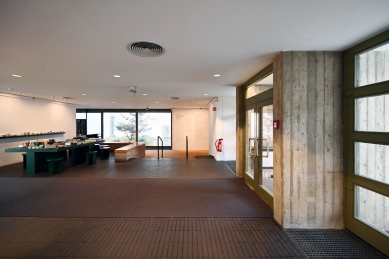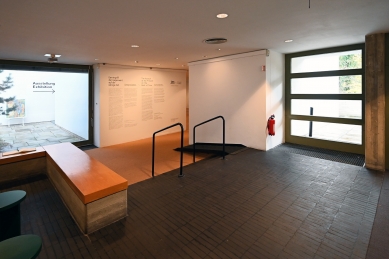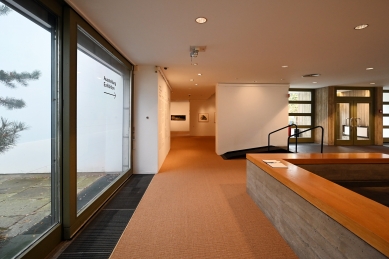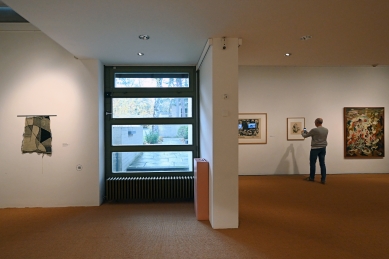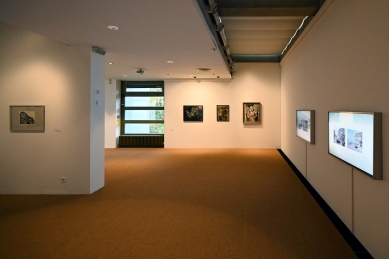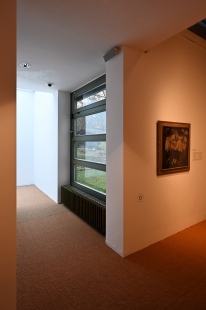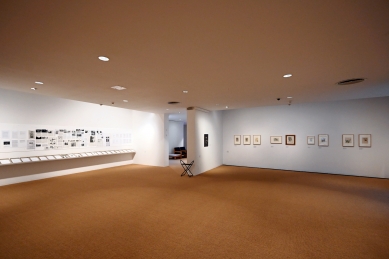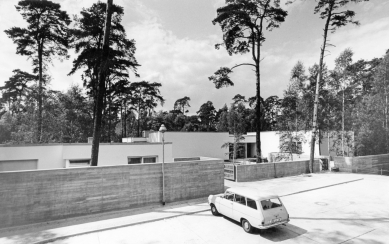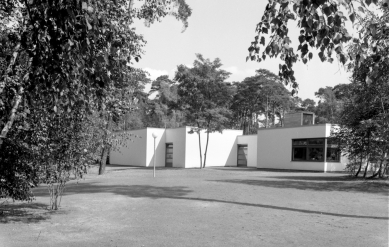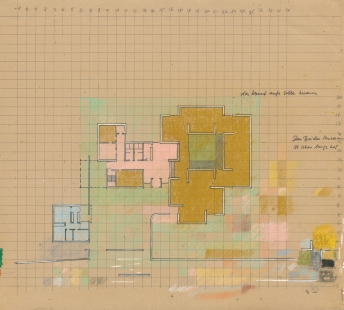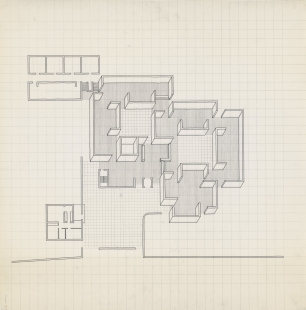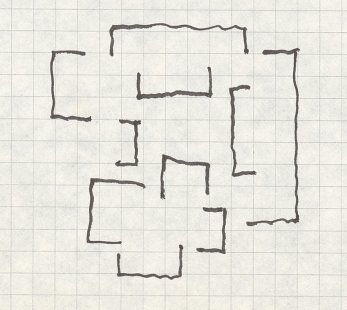
Brücke Museum

The establishment of a museum dedicated to the artistic group (Die) Brücke was initiated in 1964 by the expressionist painter Karl Schmidt-Rottluff (1884-1976), a former member of the young artistic association (1905-13) and later a professor at the university in Charlottenburg in West Berlin. Schmidt-Rottluff donated his paintings to the state of Berlin, thereby laying the foundations for the collection of the new museum. Just three years later, on September 15, 1967, the new Brücke museum building, designed by Werner Düttmann, opened in the Berlin district of Dahlem. From the beginning, the Brücke museum has been part of the Berlin Senate Department for Culture and Social Cohesion.
"Dear and esteemed Mr. Düttmann, now that the hustle and bustle of the opening has quieted down, I would like to sincerely thank you once again. With the construction of the Brücke museum, you have created something that can only be praised... Your building is well proportioned and appropriate throughout... and the landscape has been incorporated into it almost perfectly. Every visitor should feel content there for a while... Always yours, KSR"
These enthusiastic words were written by Karl Schmidt-Rottluff to architect Werner Düttmann on September 25, 1967, ten days after the grand opening of the Brücke museum. These lines testify to the close bond between the two men. Düttmann designed the building, which is now protected as a historical monument, together with painter Schmidt-Rottluff and the founding director of the museum Leopold Reidemeister (1900-87), who had previously led the Cologne Wallraf-Richartz Museum (1950-57) and the Berlin State Museums (1957-64).
The location of the museum on the edge of Grunewald Forest was intentional. For the artistic group Die Brücke, nature was not only a place where they painted but also an important motif in their work. The individual exhibition rooms fit into the surroundings: they are grouped around an inner courtyard and allow a view into the forest through floor-to-ceiling windows. The aesthetic contrast between the low modern building and today’s neoclassical Kunsthaus Dahlem (originally the sculptor's studio of Arno Breker by architect Hans Freese from the period 1939-42, which was reconstructed in 2015 by the couple Petra and Paul Kahlfeldt - translator's note) was also an intentional choice. Düttmann's design was set against the monumental building of the former studio, which the national socialists built for sculptor Arno Breker. Düttmann's museum building maintains a distance and draws from the Bauhaus tradition. The museum was created specifically for exhibits from the group Die Brücke. Its dimensions and characteristics respond to their works and present them in the best light. Inside the Brücke museum, the architect has evoked an open yet intimate atmosphere for displaying expressionist art.
Düttmann's previous realizations, such as the Academy of Arts on Hanseatenweg, the library in the Hansaviertel district, or the St. Agnes Church in Kreuzberg, demonstrate how consciously he used various materials and their natural coloring. In the Brücke museum, the color palette is characterized by exposed concrete, oak wood, yellow shades of coconut mats, and black bricks on the floors of the entrance area. Düttmann conceived the museum comprehensively, including interior solutions with great attention to detail. As a result, the Brücke museum does not convey a temple-like impression but rather resembles a private villa that invites visitors to sit down.
"Dear and esteemed Mr. Düttmann, now that the hustle and bustle of the opening has quieted down, I would like to sincerely thank you once again. With the construction of the Brücke museum, you have created something that can only be praised... Your building is well proportioned and appropriate throughout... and the landscape has been incorporated into it almost perfectly. Every visitor should feel content there for a while... Always yours, KSR"
These enthusiastic words were written by Karl Schmidt-Rottluff to architect Werner Düttmann on September 25, 1967, ten days after the grand opening of the Brücke museum. These lines testify to the close bond between the two men. Düttmann designed the building, which is now protected as a historical monument, together with painter Schmidt-Rottluff and the founding director of the museum Leopold Reidemeister (1900-87), who had previously led the Cologne Wallraf-Richartz Museum (1950-57) and the Berlin State Museums (1957-64).
The location of the museum on the edge of Grunewald Forest was intentional. For the artistic group Die Brücke, nature was not only a place where they painted but also an important motif in their work. The individual exhibition rooms fit into the surroundings: they are grouped around an inner courtyard and allow a view into the forest through floor-to-ceiling windows. The aesthetic contrast between the low modern building and today’s neoclassical Kunsthaus Dahlem (originally the sculptor's studio of Arno Breker by architect Hans Freese from the period 1939-42, which was reconstructed in 2015 by the couple Petra and Paul Kahlfeldt - translator's note) was also an intentional choice. Düttmann's design was set against the monumental building of the former studio, which the national socialists built for sculptor Arno Breker. Düttmann's museum building maintains a distance and draws from the Bauhaus tradition. The museum was created specifically for exhibits from the group Die Brücke. Its dimensions and characteristics respond to their works and present them in the best light. Inside the Brücke museum, the architect has evoked an open yet intimate atmosphere for displaying expressionist art.
Düttmann's previous realizations, such as the Academy of Arts on Hanseatenweg, the library in the Hansaviertel district, or the St. Agnes Church in Kreuzberg, demonstrate how consciously he used various materials and their natural coloring. In the Brücke museum, the color palette is characterized by exposed concrete, oak wood, yellow shades of coconut mats, and black bricks on the floors of the entrance area. Düttmann conceived the museum comprehensively, including interior solutions with great attention to detail. As a result, the Brücke museum does not convey a temple-like impression but rather resembles a private villa that invites visitors to sit down.
Brücke Museum
The English translation is powered by AI tool. Switch to Czech to view the original text source.
0 comments
add comment


